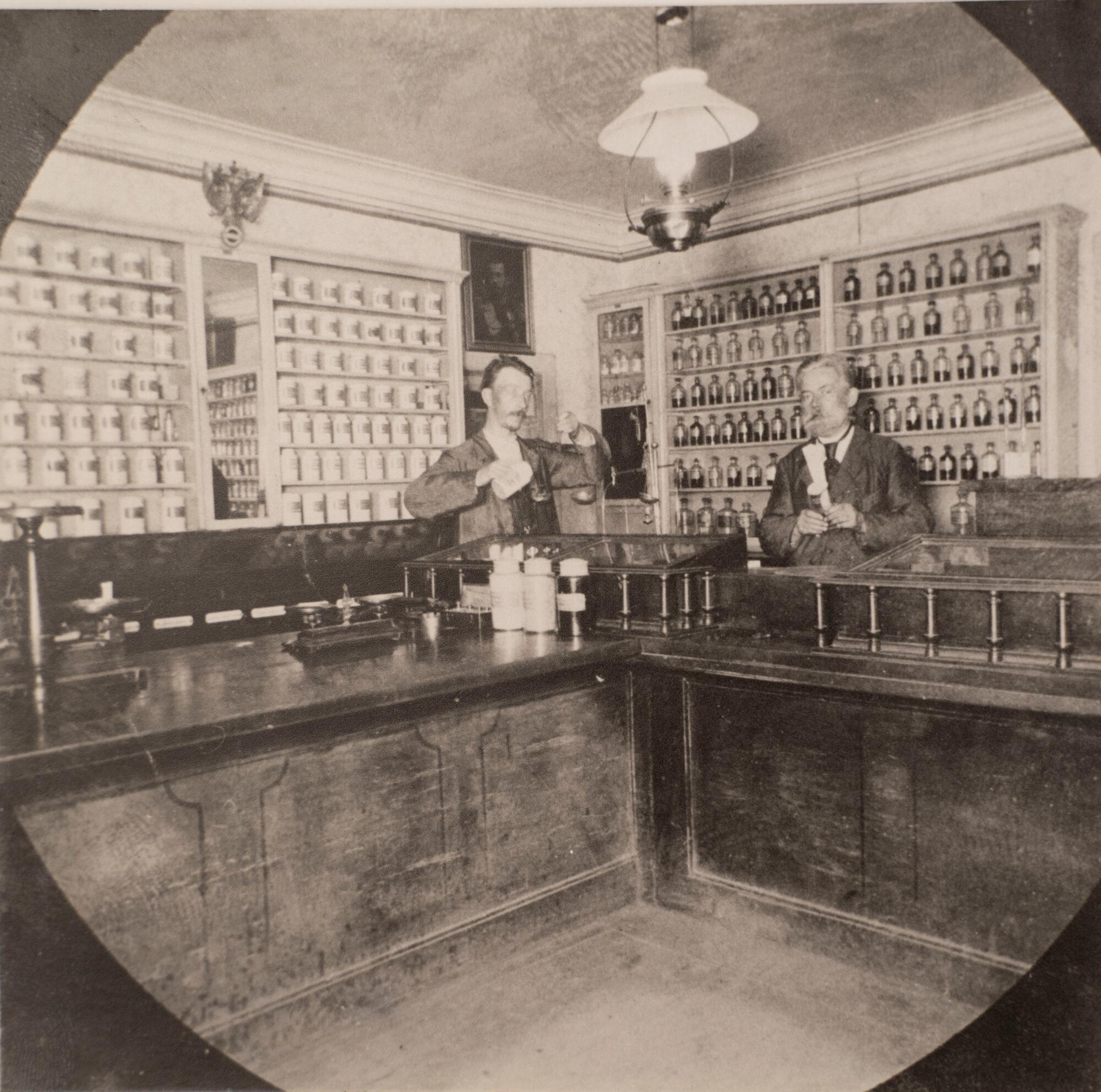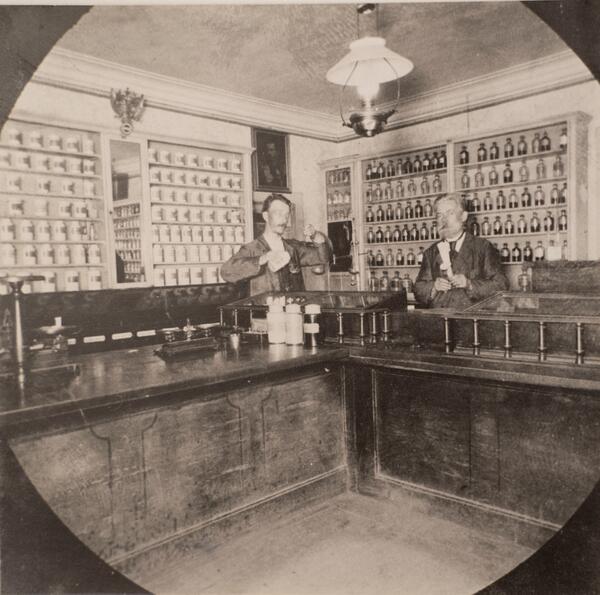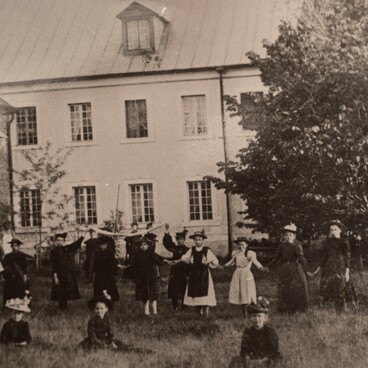The old photograph shows the trading floor of the Sarepta pharmacy. The photograph was donated to the museum by Eugen Langerfeld, a descendant of the famous Sarepta pharmacist and inventor of the Sarepta balsam Franz Langerfeld.
Sarepta pharmacy has always been famous for both its internal appearance and a complete supply of quality medicines. The pharmacy had a wide range of medicines, as well as a large selection of medical and surgical equipment and instruments.
In the second half of the 18th - early 20th centuries, the Sarepta pharmacy was considered one of the best in the Saratov province, its services were used not only by the inhabitants of the region, but also by travelers from different cities and regions of Russia and Europe.
The high level of education and training of pharmacists, healers, doctors of Sarepta - Johann Veer, Karl Seidel, Karl Wunderlich, Hugo Christoph, Franz LangerfeLd, Kurt Christoph and others - made it possible to follow all the achievements of domestic and foreign medicine and pharmacology of that time.
The pharmacists of Sarepta also widely practiced traditional remedies of Russian, German, Kalmyk and Tibetan medicine. Almost all of them had knowledge of botany, collected local medicinal herbs, roots, fruits for processing and manufacture of medicines. Imported plant materials were also used.
There was an apothecary garden at the pharmacy where medicinal herbs and plants were planted and dry herbs were stocked. Production of tinctures, mixtures, drying and processing of plants was carried out in a special workshop.
The Sarepta community has always shown concern for the health of its members. It was forbidden to practice medicine without proper education. All residents of Sarepta, as well as hired workers, could use the services of a community doctor free of charge.
Medical education and services for the colonists, sanitary measures taken in the settlement, led to the fact that during the entire existence of the colony, neither the plague epidemic nor the cholera epidemic affected Sarepta and did not claim one colonist’s life.
In 1918, Sarepta pharmacy was nationalized and continued to operate until the 1940s.
Sarepta pharmacy has always been famous for both its internal appearance and a complete supply of quality medicines. The pharmacy had a wide range of medicines, as well as a large selection of medical and surgical equipment and instruments.
In the second half of the 18th - early 20th centuries, the Sarepta pharmacy was considered one of the best in the Saratov province, its services were used not only by the inhabitants of the region, but also by travelers from different cities and regions of Russia and Europe.
The high level of education and training of pharmacists, healers, doctors of Sarepta - Johann Veer, Karl Seidel, Karl Wunderlich, Hugo Christoph, Franz LangerfeLd, Kurt Christoph and others - made it possible to follow all the achievements of domestic and foreign medicine and pharmacology of that time.
The pharmacists of Sarepta also widely practiced traditional remedies of Russian, German, Kalmyk and Tibetan medicine. Almost all of them had knowledge of botany, collected local medicinal herbs, roots, fruits for processing and manufacture of medicines. Imported plant materials were also used.
There was an apothecary garden at the pharmacy where medicinal herbs and plants were planted and dry herbs were stocked. Production of tinctures, mixtures, drying and processing of plants was carried out in a special workshop.
The Sarepta community has always shown concern for the health of its members. It was forbidden to practice medicine without proper education. All residents of Sarepta, as well as hired workers, could use the services of a community doctor free of charge.
Medical education and services for the colonists, sanitary measures taken in the settlement, led to the fact that during the entire existence of the colony, neither the plague epidemic nor the cholera epidemic affected Sarepta and did not claim one colonist’s life.
In 1918, Sarepta pharmacy was nationalized and continued to operate until the 1940s.



